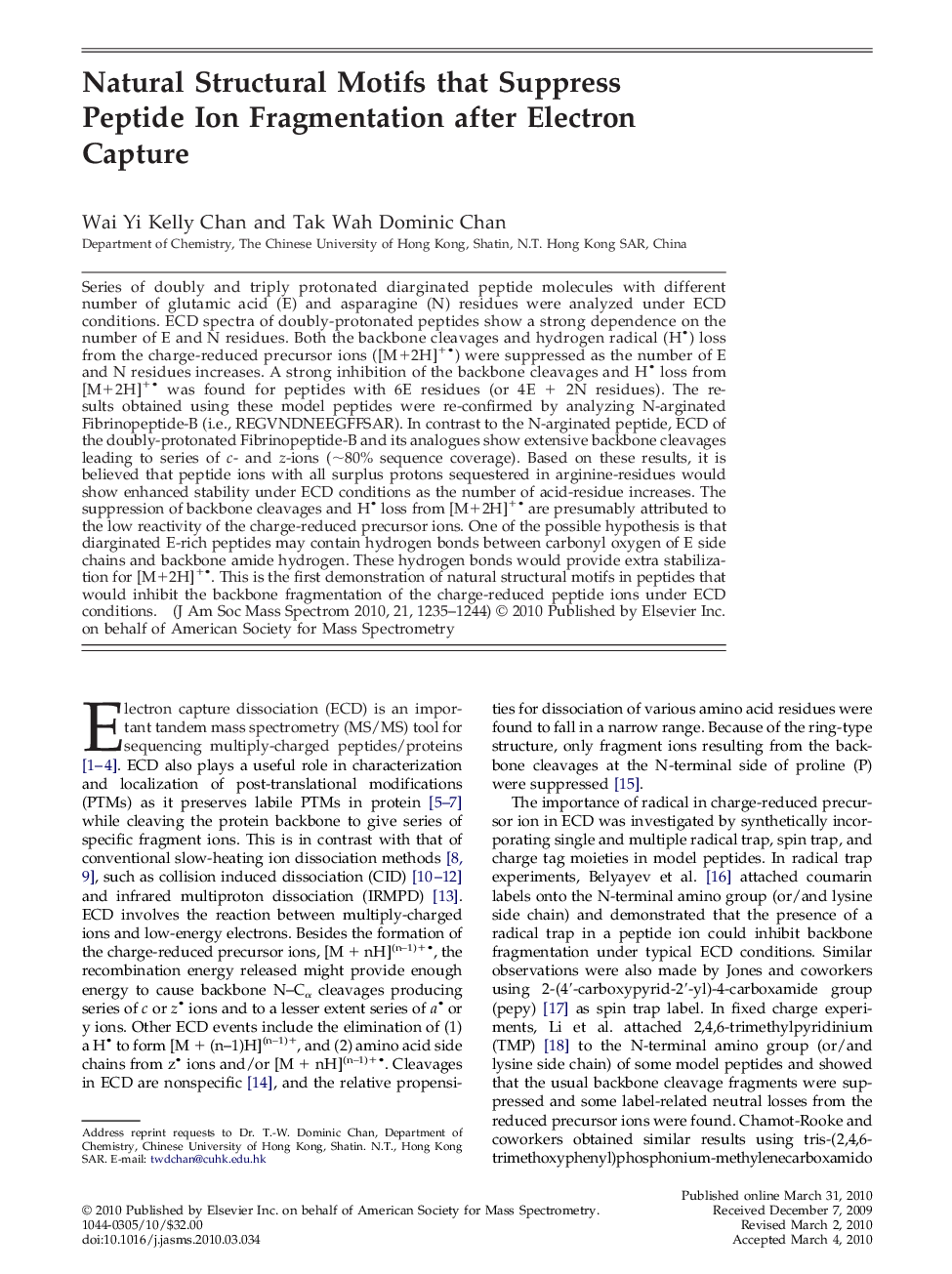| کد مقاله | کد نشریه | سال انتشار | مقاله انگلیسی | نسخه تمام متن |
|---|---|---|---|---|
| 1195401 | 964342 | 2010 | 10 صفحه PDF | دانلود رایگان |

Series of doubly and triply protonated diarginated peptide molecules with different number of glutamic acid (E) and asparagine (N) residues were analyzed under ECD conditions. ECD spectra of doubly-protonated peptides show a strong dependence on the number of E and N residues. Both the backbone cleavages and hydrogen radical (H
• ) loss from the charge-reduced precursor ions ([M+2H]+
• ) were suppressed as the number of E and N residues increases. A strong inhibition of the backbone cleavages and H
• loss from [M+2H]+
• was found for peptides with 6E residues (or 4E + 2N residues). The results obtained using these model peptides were re-confirmed by analyzing N-arginated Fibrinopeptide-B (i.e., REGVNDNEEGFFSAR). In contrast to the N-arginated peptide, ECD of the doubly-protonated Fibrinopeptide-B and its analogues show extensive backbone cleavages leading to series of c- and z-ions (∼80% sequence coverage). Based on these results, it is believed that peptide ions with all surplus protons sequestered in arginine-residues would show enhanced stability under ECD conditions as the number of acid-residue increases. The suppression of backbone cleavages and H
• loss from [M+2H]+
• are presumably attributed to the low reactivity of the charge-reduced precursor ions. One of the possible hypothesis is that diarginated E-rich peptides may contain hydrogen bonds between carbonyl oxygen of E side chains and backbone amide hydrogen. These hydrogen bonds would provide extra stabilization for [M+2H]+
• . This is the first demonstration of natural structural motifs in peptides that would inhibit the backbone fragmentation of the charge-reduced peptide ions under ECD conditions.
Graphical AbstractSecondary structures in diarginated E-rich peptides suppress peptide ion fragmentation under normal electron capture dissociation condition.Figure optionsDownload high-quality image (85 K)Download as PowerPoint slide
Journal: Journal of the American Society for Mass Spectrometry - Volume 21, Issue 7, July 2010, Pages 1235–1244